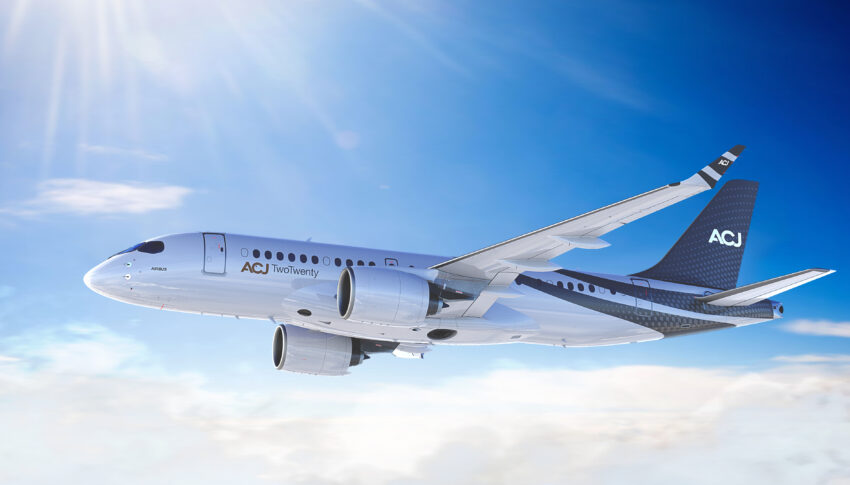The way people in aviation work has been has been transformed by the effects of the COVID-19 pandemic, like almost every other industry worldwide. But more than just swapping Zoom and Teams for conference room spiderphones, aviation has transformed the way it works throughout the supply and production chain. New digital ways of doing business — and new digital businesses — will be the future of aviation.
“The last three years have had a long-lasting impact on the aviation industry,” Sebastian Blumberger, senior vice president for strategy at German supplier Diehl Aviation tells us. “The importance of the long-range aircraft is decreasing compared to the focus on single aisle production. Most companies in the industry need financial support, which makes large investments more difficult. In addition, in times of crisis, the resilience of supply chains becomes more important. Climate-efficient flying and sustainability are moving strongly into the foreground of perception and require a high willingness to change and invest from all stakeholders.”
Diehl’s Carsten Laufs, senior vice president for innovation and digitalisation, explains that “digital innovation is an opportunity to optimise our end-to-end process with digital continuity across the entire product lifecycle, creating value at the same time. Our customers will benefit from digitally enhanced, shorter development cycles as well as smart technologies and connected products in the aircraft cabin and beyond. This will enable them to offer a more personalised flight experience and higher service reliability.”
A particular focus for Diehl at present is at the intersection of the airline and the airport, and in particular smart boarding. The German supplier is developing digital processes and components to analyse, monitor and accelerate the boarding and deboarding processes, perennially a topic of much interest to airlines, airports and ground services, where gaps in organisational silos often lead to suboptimal operations — and poor passenger experience at the gate and in the cabin.
Diehl is also working on autolocation as part of the i+sCabin2.0 programme, and prospects include whether assigning a specific passenger service unit can be assigned to a specific seating group as part of cabin digitalisation. In addition, Diehl and Thales Avionics are working together on a cabin projection system they call the In-Cabin-Experience-Enhancer. Beyond allowing branding messages, this kind of system can improve operations: options mooted have included large row numbers projected onto bins, live information display, and much more.
At Airbus, the European — and part-Canadian — airframer ended developing a digital launch, sales and customisation process at speed the COVID-19 pandemic for its latest aircraft. The ACJ TwoTwenty, the business aviation version of the capable A220 single-aisle small airliner that started its life as the Bombardier C Series, came to market during the height of the pandemic. Fast adoption of the new generation of remote business and collaboration tools meant that team members and customers around the world could connect.
As travel ramps up, Chadi Saade, vice president commercial for the ACJ programme, tells us, the new normal of videoconferencing means that the industry is getting used to a new dynamic around in-person meetings: getting right down to the contractual sales nitty-gritty and having meetings that are more productive, but fewer of them and later in the process.
Also driven by the pandemic, Airbus created an entire digital, virtual and augmented suite of tools to sell the aircraft to customers and enable them to add their own customisations.
Saade explains that the goal was to attempt to replicate the TwoTwenty Creative Studio in Toulouse remotely, to the maximum extent possible with current technology.
The creative studio itself is an impressive balancing of leading-edge visualisation technology and the need to ensure that the technology works for discerning clients who may not be as technologically enthusiastic as the studio’s tech integrators.
In Toulouse, “there is a whole system of projection on the floor, in real size, of the whole layout that you’re going to get, and you can walk through,” Saade explains. “There are the materials that you can touch and feel.”
Adding a full system of cameras, vision mixer technicians and technologically-equipped staff means that a remote customer can get almost the same experience, with a remote ‘cabin suitcase’ of materials that can be couriered around the world to give the real-world look and feel of Leather X with Fabric Y and Wood Z.
At Safran, senior manager for UX design and innovation connectivity Ron Verweij tells us that the very business model of aviation is changing.
“One of those new business models is found in SOPHY, the winner of a Crystal Cabin Award in 2021,” he explains. “This is a fleet management solution to manage the Airlines’ catering equipment fleet and optimising ground processes, and is the first stepping stone towards the connected interior. In the value proposition design process, we created a system to support airlines to optimise the balancing of their fleet and reduce the overstock of catering equipment on the ground, while collecting process data to optimise ground and turnaround processes.”
Safran is spreading internal best practice across its operation, with technologies like augmented reality first used on engines now making its way to other parts of the business: training electrical riggers to assemble incredibly intricate six-figure business class mini-suites, for example.
Fundamentally, says Verweij, “technologies today are able to do everything and we can see many examples around us — the key is finding the right value propositions. Next generation technologies I am very excited about include AI empowered sensors that monitor, process data input and support real time processes: [these] will enable efficiencies we cannot imagine.”
The future is ripe with opportunity. Apps turning into AI-powered personal assistants, the growth of self-service and autonomy, machine learning analysis of the inconceivable amount of data that will be produced — all of it is the growth medium for a new digital aviation industry that has never needed to innovate more than it does now.
Author John Walton
Published 6th December 2022
Feature image ACJ TwoTwenty in the sky, courtesy of Airbus




